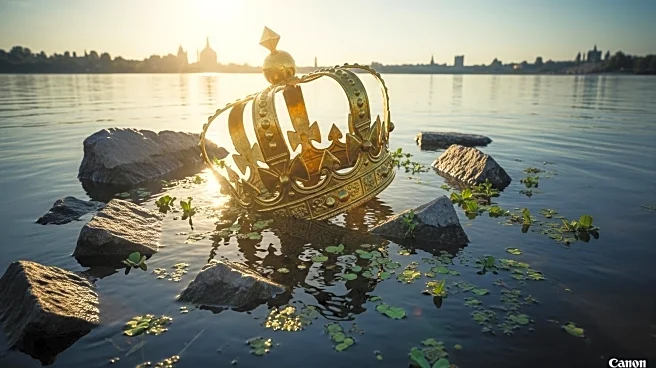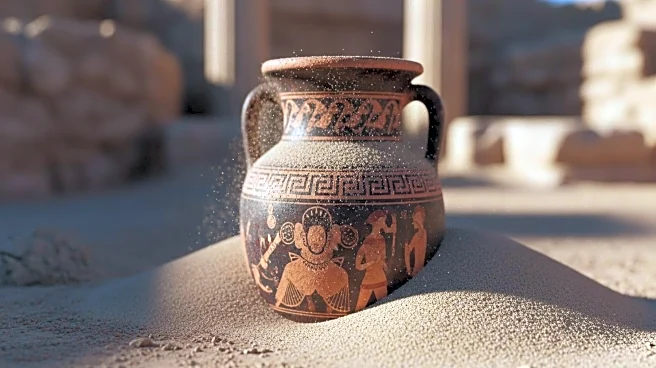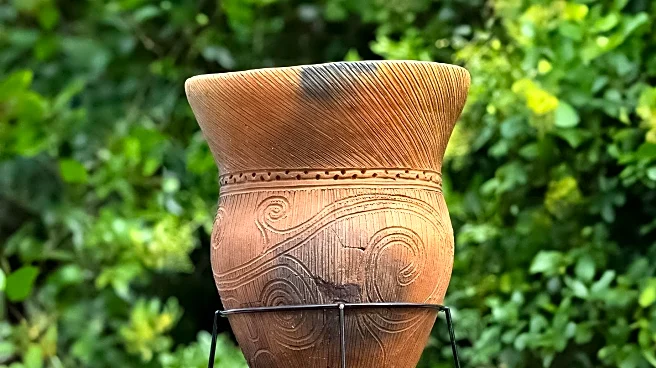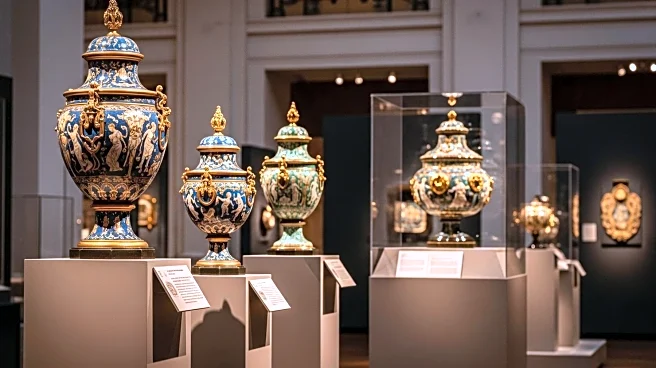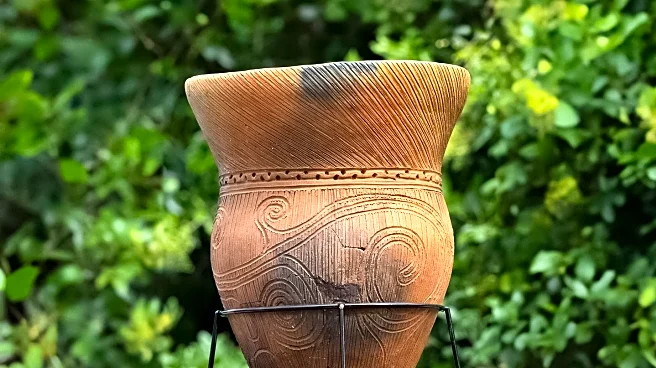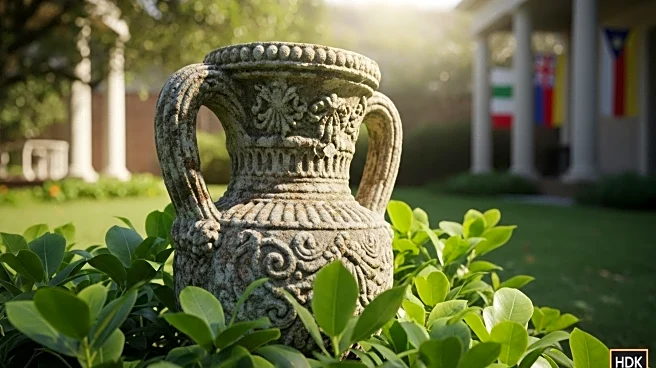What is the story about?
What's Happening?
Archaeologists have unearthed remnants of the historic royal palace Villa Regia from the Vistula River in Warsaw, Poland. The discovery sheds light on a violent part of the country's history during the Swedish Deluge from 1655 to 1660. The palace, once one of the most magnificent in 17th-century Europe, was looted and destroyed by Swedish troops. Artifacts retrieved include architectural elements such as marble claddings, tiles, and fragments of monumental staircases. A significant find was a fragment of an arcade arch weighing over 440 pounds. The Museum of Polish History plans to reconstruct the palace staircase using these artifacts.
Why It's Important?
The discovery provides valuable information for reconstructing the royal residence Villa Regia, offering insights into the power and wealth of the old Polish-Lithuanian Commonwealth. It highlights the crisis faced by the state during the Swedish Deluge, a period marked by significant population loss. The artifacts will undergo further conservation and research, contributing to the understanding of Poland's historical and cultural heritage.
What's Next?
The Museum of Polish History will continue to collaborate with archaeologists and heritage conservators to preserve and study the artifacts. The reconstruction of the palace staircase will serve as a historical narrative, educating the public about the country's past. Further archaeological discoveries in Poland may continue to reveal more about the nation's history and cultural evolution.
Beyond the Headlines
The discovery emphasizes the importance of archaeological research in uncovering lost historical narratives and cultural heritage. It also highlights the collaborative efforts between museums, archaeologists, and local authorities in preserving and interpreting historical artifacts.
AI Generated Content
Do you find this article useful?
